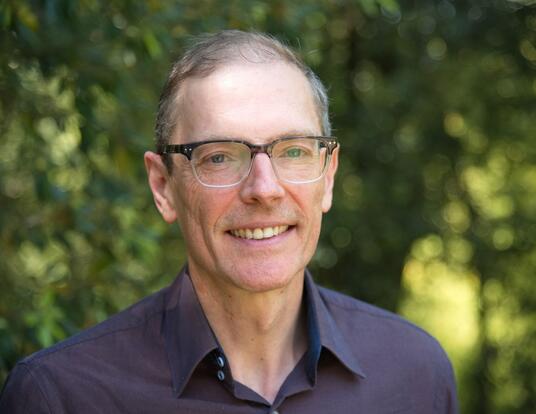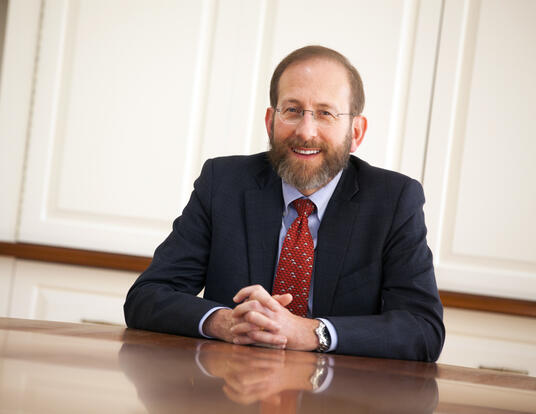Mina Bissell: 2023 Centennial Medal Citation
It sounds like common knowledge: cancer develops when genes mutate, causing cells to grow abnormally and out of control. But this is only half the story. Through bold and inventive research, Mina Bissell proved that a cell’s surrounding microenvironment helps determine whether it behaves normally or becomes cancerous, upending years of conventional wisdom and opening new pathways for cancer research and therapies.
The top high school student in her native Iran, Bissell studied chemistry at Bryn Mawr and Radcliffe College as a member of the Class of 1963. She continued her studies in Harvard Medical School-based graduate programs, where she was one of just three women students, completing her master’s in bacteriology and biochemistry in 1965 and her PhD in microbiology and molecular genetics in 1969. Following an American Cancer Society postdoctoral fellowship at UC Berkeley, Bissell joined the Lawrence Berkeley National Laboratory in 1972, advancing to become director of the Cell and Molecular Biology Division and Life Sciences Division, associate director for Biosciences, and, in 2002, distinguished senior scientist, the lab’s highest rank. She has served in several senior advisory roles and received Berkeley Lab’s Lifetime Achievement Award—a fitting capstone to a distinguished career spanning half a century. Bissell has also been on the faculty of four graduate groups at UC Berkeley and UC San Francisco, received the American Cancer Society Medal of Honor and the American Association for Cancer Research Lifetime Achievement Award, helped launch the journal Integrative Biology, and led the American Society of Cell Biology as president.
While specializing in breast cancer, Bissell revolutionized the larger field of cancer biology by proving that we cannot fully understand cancer by studying individual cells in isolation. When it comes to cell behavior, context is key. Over decades, Bissell conducted pioneering research into how the microenvironment surrounding a cell, known as the extracellular matrix, affects the way cells behave. The extracellular matrix was once presumed to be nothing more than the glue holding cells together, but Bissell found that it is actually a crucial part of a two-way street: there is what she calls “dynamic reciprocity” between cells and their environment, with each strongly influencing the other. Recognizing the need to look beyond the two-dimensional limitations of cells in petri dishes, Bissell devised three-dimensional cell culture techniques that offer a clearer picture of the dynamic reciprocity concept that she established.
Joan Brugge, director of the Harvard Ludwig Cancer Center, has used Bissell’s three-dimensional techniques in her own work. She admires Bissell’s creativity and persistence in advancing research that challenges long-held assumptions. “Mina has the ability to design and execute innovative, imaginative, and interesting experiments and to think out of the box in formulating explanations of her experimental findings,” says Brugge. “Her concept of dynamic reciprocity is now becoming widely accepted as dogma, but Mina spoke to a predominantly deaf audience for many years and bravely forged on despite skepticism. The field has now caught up with Mina. The concepts that she has developed are fundamental to normal tissue morphogenesis and cancer, and the impact of her work is profound.”
Donald Ingber, director of the Wyss Institute for Biologically Inspired Engineering at Harvard University, calls Bissell “a force to be reckoned with.” “She’s done a great job building a bridge between scientific communities that had not talked before, particularly the gene expression world and the developmental world,” Ingber says. “She’s always been open to applying different methods and approaches, and she’s interested in confronting the problem at the level of complexity that’s relevant: How does the whole mammary gland develop? How does the whole gland progressively become abnormal or cancerous? She really pioneered that field.”
Bissell’s impact is not limited to her own work; she has also had a broad and lasting influence through her commitment to mentoring others. Kornelia Polyak, professor of medicine at Harvard Medical School and of medicine and medical oncology at the Dana-Farber Cancer Institute, has collaborated with Bissell for many years. “Mina has an infectious enthusiasm about science, she is full of energy, and she is not afraid to tackle difficult problems,” Polyak says. “She has been an amazing mentor to many people in the field, especially supportive of junior investigators and women.”
Ingber and Brugge share this sentiment. “Mina has taken hundreds of young women scientists under her wing, offering her support at many different levels, from career advice, to personal advice for coping with the stress of being a woman in science, to promoting women’s involvement in scientific meetings and review boards,” Brugge says. “She is truly a champion of women in science.”
Mina Bissell, for your creativity and innovation in your approach to research, for your paradigm-shifting work on the dynamic reciprocity between cells and their microenvironment, which revolutionized the field of cancer biology, and for the inspiration and mentorship you have given so many women in science, we are proud to award you the 2023 Centennial Medal.
Get the Latest Updates
Join Our Newsletter
Subscribe to Colloquy Podcast
Simplecast





